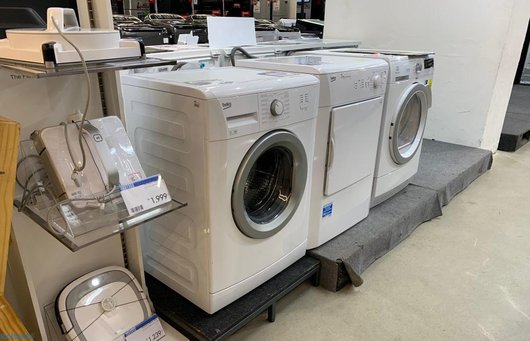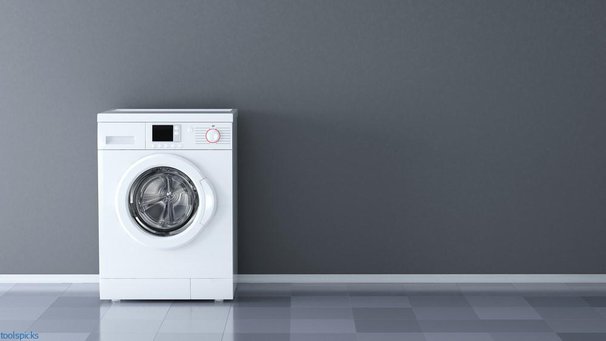Have you noticed that your washer aggressively produces loud noises or shakes while running cycles? The washer suspension rods may be bad.
Suspension rods play a crucial role in washing machines. They connect the top part of the washer with the bottom part where the drum spin occurs. Therefore, they support the tub and keep the washing machine steady.
Typically, top load washing machines have four suspension rods attached to the cabinet.
If they are bad, they not only cause the machine to operate noisily, but they can cause it to fall off. The extent of noise and vibration depends on whether or some of the suspension rods are damaged.
This article will discuss ways to establish if the washer suspension rods are bad and what to do about them.
How to Determine if Washer Suspension Rods are Bad
Look Out for Signs
As mentioned earlier, the most common signs that your washer suspension rods may be bad are noise, shaking, or vibrations. The noises may be rattling, grinding, or squeaking. The noise and movement may be random or continuous. As soon as you notice them, do not continue to run the machine. Rather, turn it off and investigate further what the issue could be.
Aside from the noise and the shaking, you may also notice leakage at the point where the hose connects the legs on both sides of the washing machine drum. Also, you may notice that the machine does not clean the clothes properly. Or, some clothes may slip below the machine.
Examine the Rods
Check the rods for cracks, dents, and rust. Since the suspension rods are inside the washer, you will need to open it up to access them. Below are the steps for examining your washer suspension rods.
Steps for Inspecting Your Washer Suspension Rods
Each of the steps described below is crucial for safely opening your washer machine, so you should follow them carefully.
- Power off the washer and unplug it from the socket.
- If you haven’t already, turn off the water.
- If you were cleaning a load of clothes, remove them from the washer.
- Then disconnect the water hoses. They are usually located at the back of the washing machine. If your washer is located in a tight space, tilt it forward to gently lift it or drag it to a more spacious area so that you can access the back. Use pliers to loosen the water hoses up and let the excess water drain. Ensure to take note of the hot and cold hose so that you do not mix them when putting them back.
- Remove the drain hose. Once again, use pliers and loosen it, and gently pull it out. Allow excess water to drain.
- Remove the upper panel. Tape down the lid so that the upper panel comes off as a unit. Once again, use the screwdriver to remove the nuts or screws. They should be located at the top part of the back of the washer. Gently pull the upper panel forwards and then up. If it detaches completely, place it aside. If it is still attached to the back of the machine, lean it against a wall or use a lanyard to hold it upright. Do not let the hinges support the weight of the upper panel.
- Now, remove the suspension rods. Lift each at a time and remove the bearing and bearing cups by pressing the tabs inwards. Then hook the suspension rod to the frame. If there are support springs, you will need to remove them from the rods.
- Temporarily close the upper lid. You may fasten some of the screws or tape across to keep it in place.
- Lay the washer down on its back. Remove the protective cover at the bottom to access the bottom of the suspension rods. Push each upwards to unhook it from the top frame and then pull it out. Repeat for all the suspension rods.
- Examine the rods for damages. If they are bad, you will need to replace them with new ones. If not, put them back and investigate further the cause of the vibration noise. You may notice that only one or two rods are damaged. In this case, you can choose to replace the damaged ones only. However, it is best to replace all four as the remaining old ones will likely get damaged soon after the initial replacement.
How to Replace Bad Washer Suspension Rods: Washing Machine Repair
With the washer already open, you just need to feed the new suspension rods. You can find a compatible suspension kit at your local hardware store or online. Below are the steps for installing the replacement suspension rods.
- Take each rod at a time and feed it through the rod openings at the bottom of the washer. Each time, push the rod upwards and hook it to the frame like you had placed it when removing the older or broken rod.
- Once all the four suspension rods are in place, put back the cover and position the clothes washer back to an upright position.
- Open the upper panel of the clothes washer again and hold it in position either against a wall or with a lanyard.
- Install each suspension rod at a time. Install the new bearing cups, attach the support springs to the rods, pull the hook up, and release it to allow it to snap in place.
- Close the upper panel and reattach the screws.
- Reattach the hot water, cold water, and drain hose securely.
- Put the machine back in position and power it. Load washer and run a washing cycle to ascertain the noise and vibrations are no longer there and you replaced the right part.
Conclusion
If you notice any shaking and vibrations, you want to address it as soon as possible. First, inspect the washer suspension rods and replace them if they are bad. Replacing is easy and straightforward, and you can do it on your own. Besides, washer suspension rods replacement kits are affordable and easily accessible both online and at your local store for easy washing machine repair.
If the shaking and noises persist despite the replacement, there could be another issue and you may even require additional appliance parts. Investigate it further and resolve it before using your washer again. If unsure of the cause and what to do, consult a professional plumber or washing machine specialist before your next washing cycle.
Ultimately, the most effective way of avoiding being caught off-guard by bad suspension rods or other washer issues is to ensure regular and thorough maintenance of your unit.
FAQs
How Much Does It Cost to Replace Washer Suspension Rods?
Replacing washer suspension rods is relatively affordable. Typically, they come as a complete kit consisting of four rods and a corresponding set of bearings and bearing cups. The kits cost about $20-$50. You can easily find one compatible with your washer’s brand and model on Amazon.
Therefore, if you choose to DIY the replacement, you will only incur the cost of buying the rods. However, if you opt to hire a professional, it may cost you $50-$200 all-inclusive, depending on the typical plumber or handyman labor costs in your area and what other washer parts you may need.
What Are Other Causes of a Noisy Washer?
Aside from a bad washer suspension rod, shaking and vibration can also be caused by damaged counterbalance springs and dysfunctional shock absorbers. In front load washing machines, noise and vibrations can indicate damaged suspension springs.



